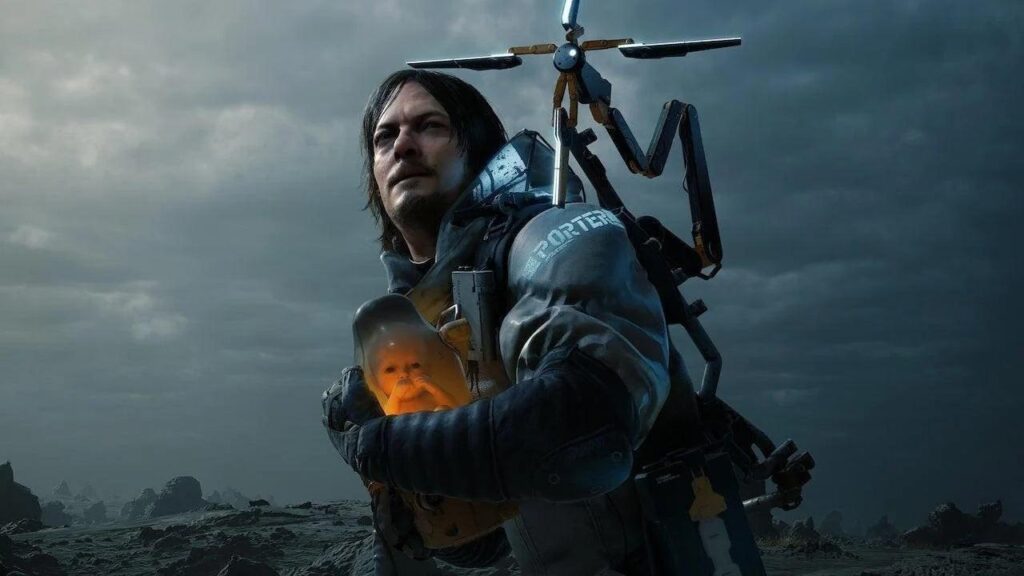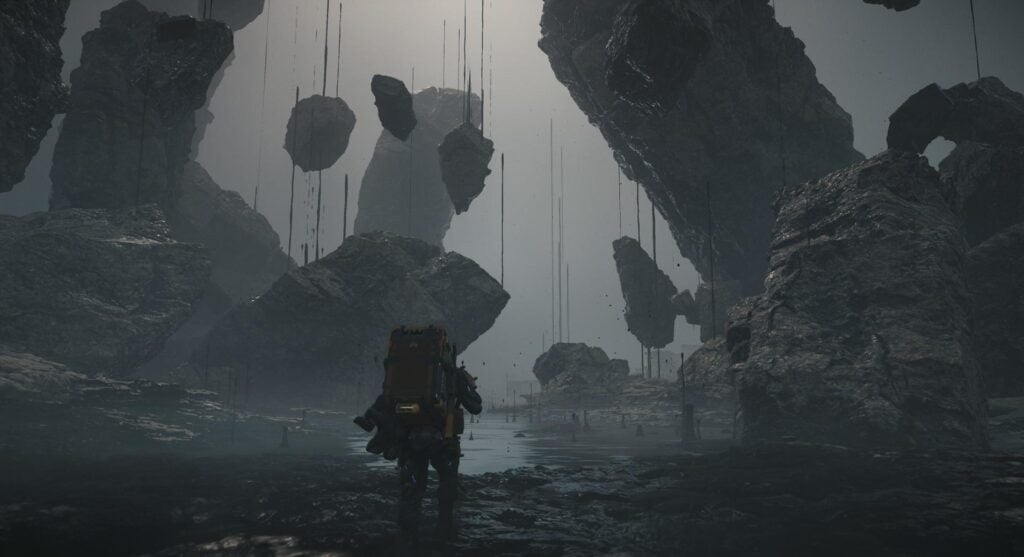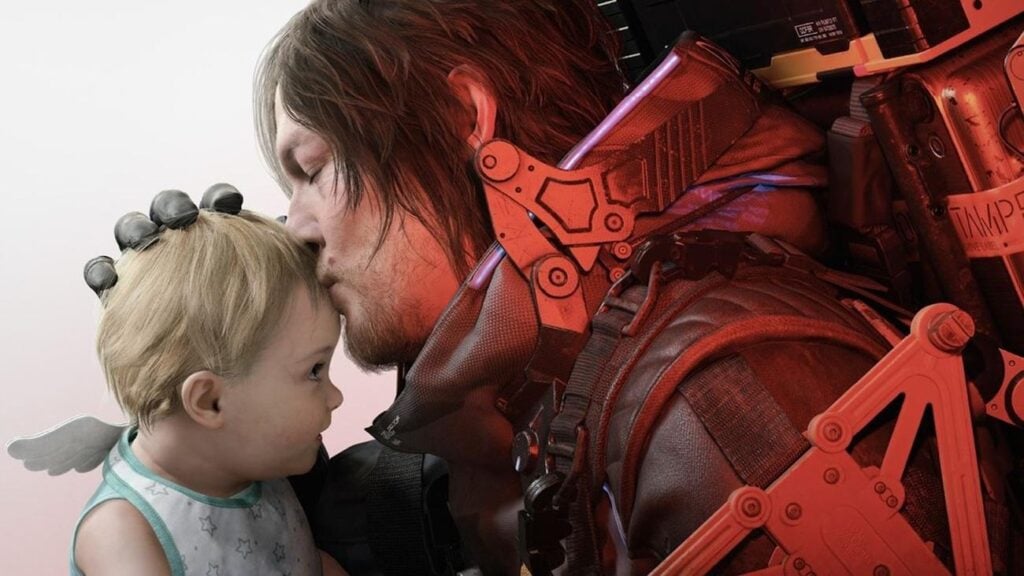There’s nothing quite like the first time you pick up Death Stranding and step into its world; a mixture of awe and curiosity, with scenery so vivid you could almost feel the wind biting at your cheeks. Shortly after, we realize: everything we do, from stumbling over rocks to watching Timefall streak the sky, is filtered through some of the most distinctive graphics in gaming. For those of us who care not just about the story, but about how it’s told visually, Death Stranding sets a new bar across both of its entries. Let’s take a deep dive into how Death Stranding graphics have shaped our adventures from the lonely wilds of the first game to the richer, stranger landscapes in the sequel.

- Using a system called the Chiral Network, players gradually reconnect cities and communities, symbolizing the restoration of unity.
Death Stranding Graphics: Visuals, Design, and DS1 vs DS2 Comparison
Great graphics don’t just happen; they’re crafted with intention, emotion, and a fair bit of risk. In Death Stranding, the visuals are more than just a pretty backdrop; they’re woven into the very soul of the experience. Whether you’re a returning Porter or just getting curious, we’ll break down what makes Death Stranding’s graphics legendary and what changes you’ll spot if you compare both games side by side.
1. Death Stranding 1: A Graphics Trailblazer
When DS1 landed, it felt like the next step for photorealism, especially on PS4. We remember walking those endless valleys, the ground damp from rain that aged everything it touched; a technical feat powered by the Decima Engine. The character models are almost uncanny in their detail, from the way Sam’s backpack sways to the subtlety of Norman Reedus’s expressions. Timefall storms roll in, casting an eerie, washed light across the hills, and every drop feels real. Those BT encounters? The silhouettes, the oily blackness, and the glints of gold were inseparable from the chills we all got exploring in the dark.
2. Artistic Design in DS1: Bleak Beauty and Surrealism
It’s hard to forget the visuals of isolation; the sweeping plains, endless desolation, and lonely, drenched posture of every landscape. Death Stranding graphics didn’t just want to make the game look beautiful; it wanted to make it look heavy, almost burdensome. Colors are muted, turning wide Icelandic vistas into an emotional canvas. BTs float between horror and curiosity, their strange forms outlined in rain. There’s no mistaking the golden masks, the flicker of Chiral crystals, or the ever-present Bridge Babies glowing softly against the darkness. Every visual serves the narrative, making us feel every ounce of Sam’s struggle.

- The world is shaped by timefall, adding both a narrative and environmental layer of tension and decay.
3. Death Stranding 2: Next-Gen Evolution
Switching to DS2, there’s a feeling we’ve left behind black-and-white sketches and entered a living painting. Developed for PS5 and high-end PCs, the next-gen leap shows up immediately: ray-traced reflections shimmer off puddles and mirrors, rain runs in more realistic rivulets down gear, and every single hair or strap moves with purpose. Foliage thickens underfoot, the ocean churns with photoreal waves, and lighting shifts naturally as clouds pass by. Even facial animations carry extra life; you’ll notice every sly look, every moment of doubt play out on-screen, marking a huge upgrade from the first game.
4. Art Direction in DS2: Expanding the Surreal
More than technical prowess, it’s the art direction that pulls us back into Death Stranding graphics. DS2 expands settings into new territory: the oceans are not simply a backdrop; they’re a presence, ever-changing and alive. Inside shelters, light glows with a lonely warmth, while Repatriate tech pulses gently. Exploration feels less empty this time around; there are traces of life all around, with gear and vehicles boasting new, sleek designs. Enemies move with an alien grace, allies carry more detail and charisma, and every space, open or closed, feels caught between the familiar and something uncanny, making the world feel even stranger, more dangerous, more wondrous.

- The environments in DS2 appear richer and more dynamic, with enhanced weather systems.
5. Death Stranding 1 vs 2: Graphics and Design Comparison
Comparing both games side by side, some differences practically leap off the screen. DS2’s textures are sharper, mud and water react more believably to movement, and environments pack in much more detail; think denser forests, busier ruins, and weather that truly feels unpredictable. NPCs and enemies are brought to life with higher-fidelity animation, and destructive set pieces (crumbling cliffs, pounding rain, flying debris) strike with new intensity. Yet, both retain that signature “lonely yet connected” vibe, proving that sharpness doesn’t erase emotion; if anything, it deepens it. DS2 feels more alive, but never lets go of the stillness and tension.

- With upgraded visuals and a more ambitious scope, DS2 evolves the original’s core ideas of connection, sacrifice, and survival.
6. Closing Things Up: The Ongoing Artistry of Death Stranding’s Visuals
Every time we drop into Death Stranding, we’re reminded that graphics aren’t just tech; they’re emotion made visible. DS1 stunned us with landscapes that felt real and heavy; DS2 raised the standard with deeper, richer worlds. So many favorite moments stick with us: cresting a lonely ridge just as the sun pierces the clouds, watching BTs glimmer in the rain, or laughing at an especially muddy fall. No matter which entry you play, you’ll find yourself pausing to admire, screenshot, and share Death Stranding graphics. What breathtaking scene left you speechless, or made you set the controller down, just to look? We’d love to hear your visual stories, too.
Go through comparisons and analysis of the Game Design of most recent and popular games via Gamerative.
7. FAQs: Death Stranding Graphics; Your Freshest Questions Answered
Q1: How does Death Stranding handle changes in time of day and weather visually?
A: Both games feature dynamic weather and lighting systems. In DS2, transitions are even more seamless; storms roll in, then clouds break to let the sun shine through, changing the feel of the landscape.
Q2: Are the cutscenes pre-rendered or rendered in real-time?
A: Most of Death Stranding’s cinematics are rendered in real-time using the in-game engine, letting the visuals remain consistent with gameplay.
Q3: Does the character customization show up visually in Doom’s world?
A: Any gear or cosmetic choices you make, like equipment colors or accessories, are instantly reflected on your character in both games, making every screenshot feel personal.
Q4: Do terrain and surfaces actually deform or change as you travel through the world?
A: Yes! In both games, but especially in DS2, mud splashes, racks bend, and tracks appear in soft ground, all thanks to next-gen physics and terrain systems.




